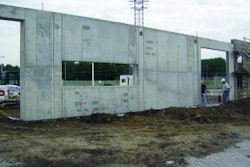
How much business will you close this year? Throw away your crystal ball. There is a method to take most of the "guestimating" out of your sales forecasting. To get a better handle on your numbers requires using a structured way to evaluate potential sales so that you can develop the right strategies to meet your goals.
While some companies are feeling uncertain about meeting revenue and earnings projections this year, others are concentrating on positioning themselves to ride out tough times by having a rising order backlog. Increases and decreases in a company's backlog indicate the future direction of sales and earnings for your company.
No matter the size of your company, a correctly maintained backlog system will provide many benefits to you including getting a better handle on your numbers. A backlog system helps control the quality of tasks to be performed and provides a higher quality of data for future analysis and improvement. Departments such as maintenance are dependent on this information to move beyond being reactive to having control of their parts and services.
Simply said, backlog means the total value of sales orders waiting to be filled. Some companies have one week of planned work and other, larger firms, have years of backlog scheduled because their projects are huge. For many construction companies, it is advisable to try to get a 100% capacity in scheduling labor hours for longer than three to five weeks. By applying controls, accurate processes and role-specific training in these areas, the backlog becomes an efficient tool for reducing waste of labor hours, parts resources and planning time. As you plan for the year ahead, six factors will have the greatest impact on your results:
1. Identify the current market situation
Every year is a different year. Last year's sales took place in a particular volatile business climate. This year many companies are faced with a bad economy. Certain industries are flat and there could be higher competitive activity. The market place may not allow you to raise or even hold your prices so the value of the average sale may go down. Forecasting sales should be a quarterly event, especially in a down economy. If your company cannot achieve your planned rate of revenue growth, you may need to:
- Add smaller projects
- Add new products or delete some products in your line.
- Develop add-ons and enhancements of current services or products to raise your total selling price
- Concentrate on certain market niches
2. Determine the readiness of your sales team
Longer tenured sales people will usually sell more than newer sales people. They know your company, product line, industry, the competition and they have established relationships. Historical information will tell you the average annual length of time it takes tenured sales people to produce sales and how long it takes a new hire to begin producing. When making your sales projections:
- Set a realistic sales forecast for each salesperson based upon their likely individual performance, their experience with your company and their prior track record
- If the total of these individual forecasts is not enough to achieve your plan, consider what you must do in terms of sales skills development, hiring more people or focusing on different types of business
3. Develop a strong sales support infrastructure
Sales growth places a strain on your entire organization. Product development people spend more time with major prospects. Managers spend more time at trade shows and conferences, and more help is needed to respond to prospect inquiries. Tighten up your infrastructure to maximize your sales efforts. Involve other managers and personnel in sales by having them share competitive information, report leads, and collaborating on industry trends through weekly meetings.
4. Accurate job costs
Ensure your sales people are not just guessing at the actual job costs. Have accurate and up-to-date prices for labor, overhead, crew rates, equipment rates, etc . Accurate estimating must include a review of what your general conditions really cost and then an accurate budget based on input from the field.
5. Factor in closing times
One of the most challenging parts of any sales forecast is determining the closing time on projects. In general, prospects buy much later than they say they will, so you have to figure out when projects will close and when they will be billed. It is best to use historical data to determine how long the typical prospect takes to move through each step in the sales cycle from proposal to closing the sale to billing. For example:
- How long does a prospect, on different types of projects, take to accept the proposal from the time your sales person submits it?
- What are the different stages of the project?
- How long will it take to realistically complete the project?
- What issues may delay the project at its different stages?
6. Extrapolate from the known to the unknown
The information you have so far will give you a month-by-month forecast of business you have sold and sales in the pipeline to be sold. For your long-term forecast, you need to consider two important factors: are you seeing a pattern of rising, declining or flat sales? And, what changes must you make to your team's sales activity to refill the prospect pipeline for future periods? Take a close look at every step in your selling cycle to determine the dollars and time that go into each sale: Prospecting, Qualifying, Appointment Setting, Estimating and Bidding, Overcoming Objections, Customer Service, other Post-Sale Support and any other steps applicable to your business. Then make sure you have the resources in place to handle the growing requirements of your sales team.
If you want to make more money or at least make your projections, make your forecasting more than a guestimate. Use the six factors above to create an efficient forecasting system. The outcome is your ability to have a better handle on how much business you will close this year.
Linda Hanson, CMC, is a certified management consultant and author of 10 Steps to Marketing Success. She writes, speaks and consults on marketing, management and customer service issues and can be contacted at www.llhenterprises.com. Sign up for her free newsletter The Superior Performance Report.


















